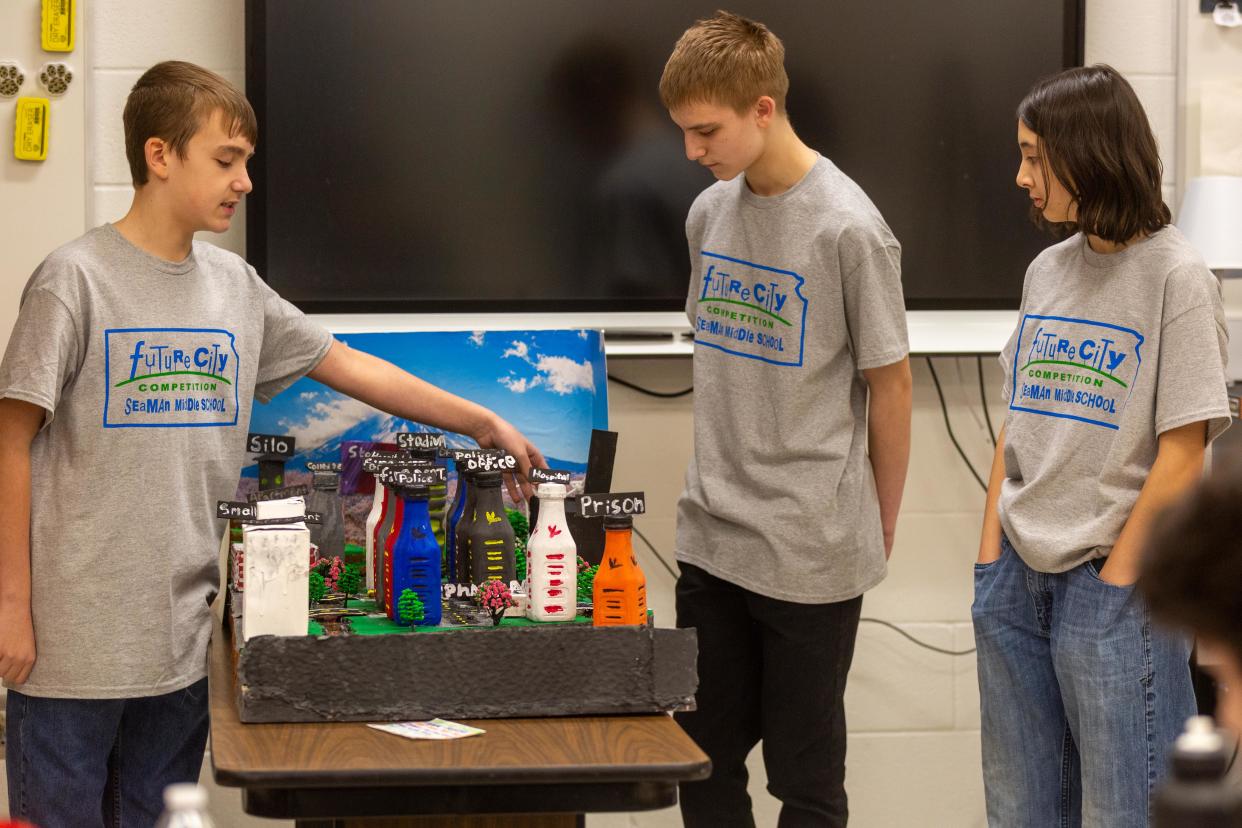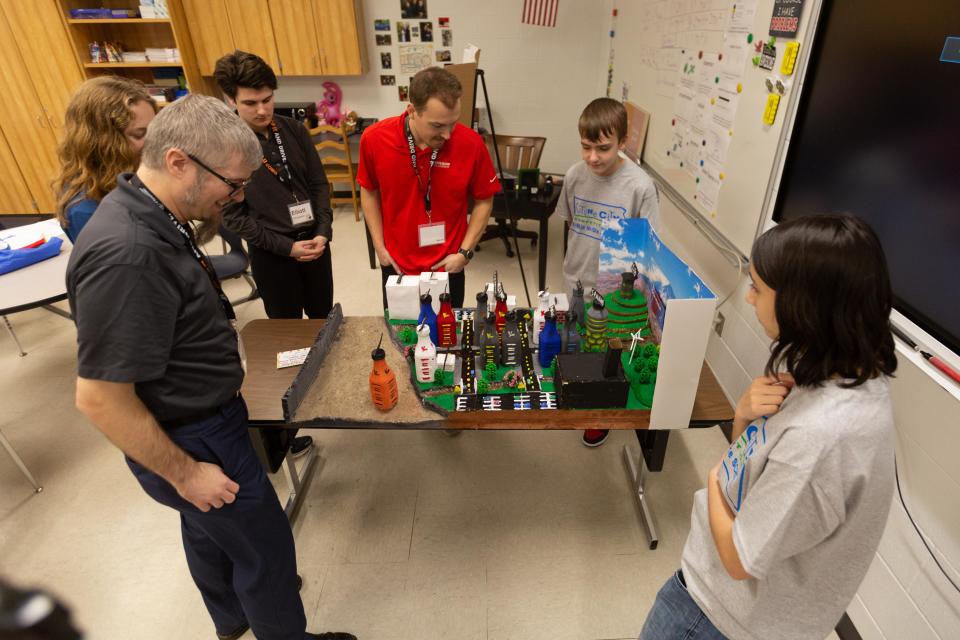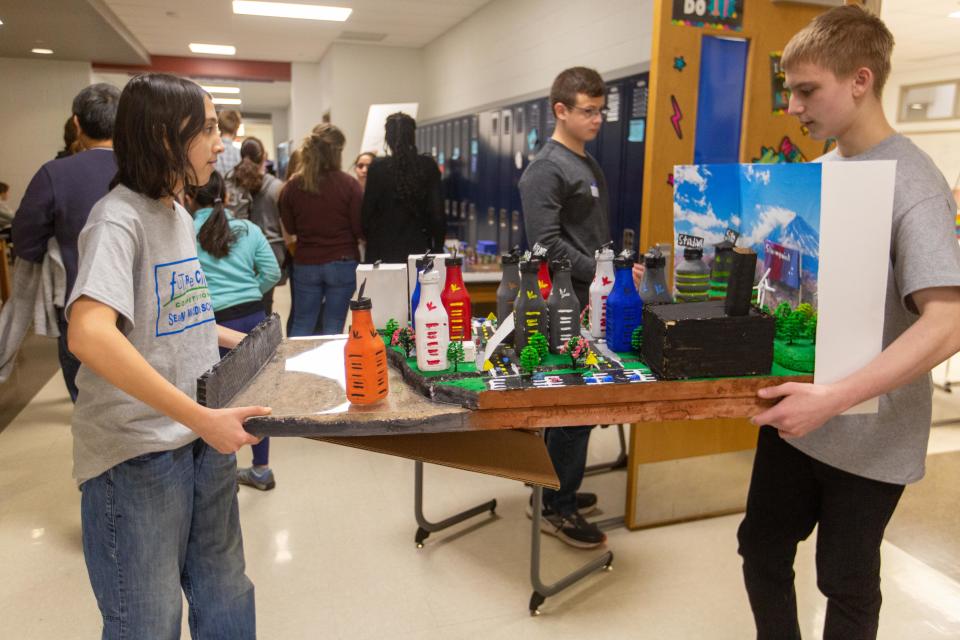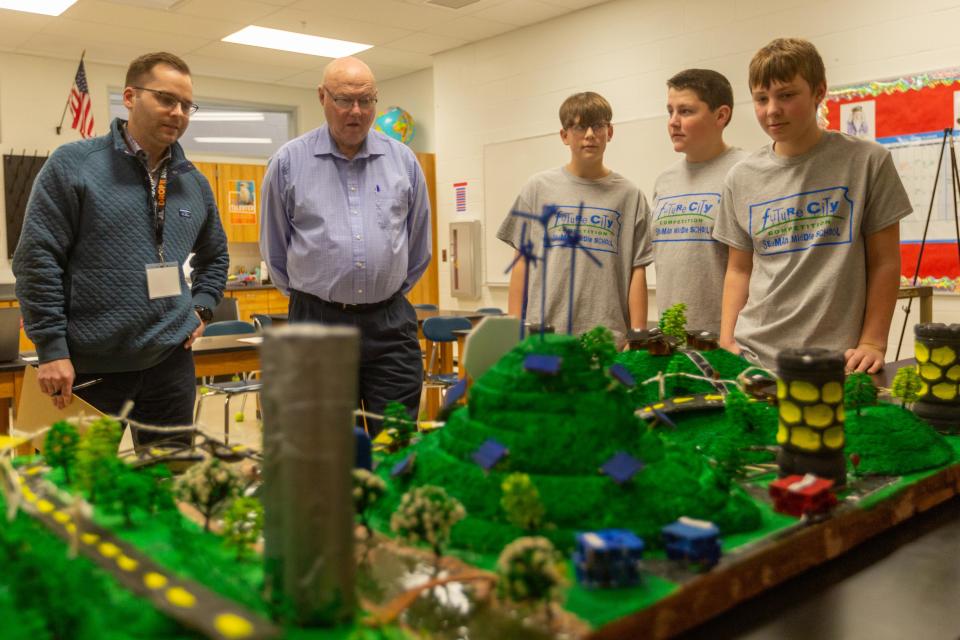How can we address climate change in 2123? These Seaman Middle School students have ideas.

The city of the future costs $100, and most of it went to epoxy resin.
In this model metropolis, painted plastic bottles stood in as eco-friendly buildings, while sanded Styrofoam represented rolling hills in southern, tropical Japan. Epoxy resin represented rivers running through the mock city, at least until middle school students ran out of the material.
This was the City of Storm Point, Japan, and it’s how a team of Seaman Middle School students see cities of the future coping with the effects of climate change.
Seaman Middle School on Saturday hosted and entered teams into a regional Future City competition, in which sixth-, seventh- and eighth-graders compete by presenting a model of a city they designed to adapt to and mitigate climate change.
More:Only 12 schools earned this national distinction, and a Topeka-area school is one of them
“It’s a way to introduce students to the world of engineering and architecture, while implementing STEM and other skills like teamwork, collaboration and setting goals,” said Todd Berry, a Seaman Middle School science teacher who also coached the school’s competing students.
The regional competition brought 45 teams from as far as Raytown, Missouri, while Seaman Middle School entered five teams.
Future City competition challenges middle school students to think about sustainability

First started in Virginia, more than 45,000 students from around the U.S. and world now compete in the yearly Future City competition, which challenges students to imagine and build models of cities a century into the future. Each model city must address a theme that changes each year but falls under the broader category of sustainability.
Some schools treat participation as an after-school extracurricular, but Seaman Middle School integrates Future Cities as a whole elective class for either seventh- or eighth-grade students.
Middle school students this year had to prepare and build city models addressing climate change. Each model had to be built using only recyclable materials and a $100 budget.

More:New Seaman superintendent Brad Willson focuses on making sure students are learning and safe
During the competition, students presented their cities to panels of judges, made up of engineers, architects and other people in STEM fields around Kansas.
The panels evaluated each team based on their model and a 1,500-word essay on climate change, among other criteria. The competition granted nine awards, each named after such sponsoring companies as Evergy, Bartlett & West and Shell, while recognizing one overall winner.
Saturday’s regional winner, a team from Southwest Middle School in Lawrence, will be invited to compete in the national competition next month in Washington, D.C.
Future City competition is natural tie-in with middle school science classes

Berry, who mainly teaches science classes in addition to the Future Cities elective, also uses the class to teach students about other aspects of city infrastructure, such as transportation. One of the next projects he’ll have students work on is building an air-powered car.
“The plus for me is that my main class here is science, and a lot of my kids, I have for both classes, so there are a lot of cross-curricular lessons,” Berry said. “We look at the city around us — we look at our city and the Seaman community to notice what is off or could be improved.”
More:Named to national program, Seaman Middle School's Rob Jackson hopes to inspire students in STEM
This year, theme was climate change, which Berry said could be tough for students to grasp.
But he made the topic relevant by helping the students understand how climate change can affect them, even in Topeka.
“We talked about erosion and how it affects farmers in Kansas, if the top soil gets washed away,” the science teacher said. “We also talked about what happens when there’s not enough rain and there’s a drought. We try to apply all of these concepts to Kansas.”
For the students, the most fun part was actually building the models, and thinking through ideas they could implement in their designs. Some students incorporated mock fusion reactors to provide renewable clean power, while others had more outside-the-box ideas to address climate change, such as pumping glacier runoff water back and refreezing it.
More:One of the best teachers in the country works at Seaman USD 345's Logan Elementary
More than anything, though, they looked for ideas that could work.
“It’s not really about being unique when it comes to preventing climate change, or doing what’s cool,” said seventh-grader Richard Evans, who was a part of the City of Storm Point team. “It’s just about what works.”
Rafael Garcia is an education reporter for the Topeka Capital-Journal. He can be reached at rgarcia@cjonline.com or by phone at 785-289-5325. Follow him on Twitter at @byRafaelGarcia.
This article originally appeared on Topeka Capital-Journal: Seaman Middle School hosts Future City sustainable design competition

